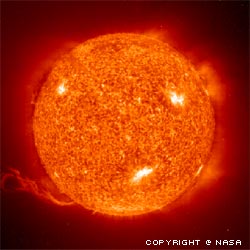Doodling Shake Bot DIY STEM Kit
$9.99$4.95
 Stars are balls of gas that have condensed from large diffuse clouds of material due to gravity. Presumably after the big bang, large clouds of hydrogen would have been dispersed throughout the universe, and local pockets of higher density would have condensed into the first stars.
Stars are balls of gas that have condensed from large diffuse clouds of material due to gravity. Presumably after the big bang, large clouds of hydrogen would have been dispersed throughout the universe, and local pockets of higher density would have condensed into the first stars.
 'Knowledge can be communicated, but not wisdom. One can find it, live it, be fortified by it, do wonders through it, but one cannnot communicate and teach it.'
'Knowledge can be communicated, but not wisdom. One can find it, live it, be fortified by it, do wonders through it, but one cannnot communicate and teach it.'